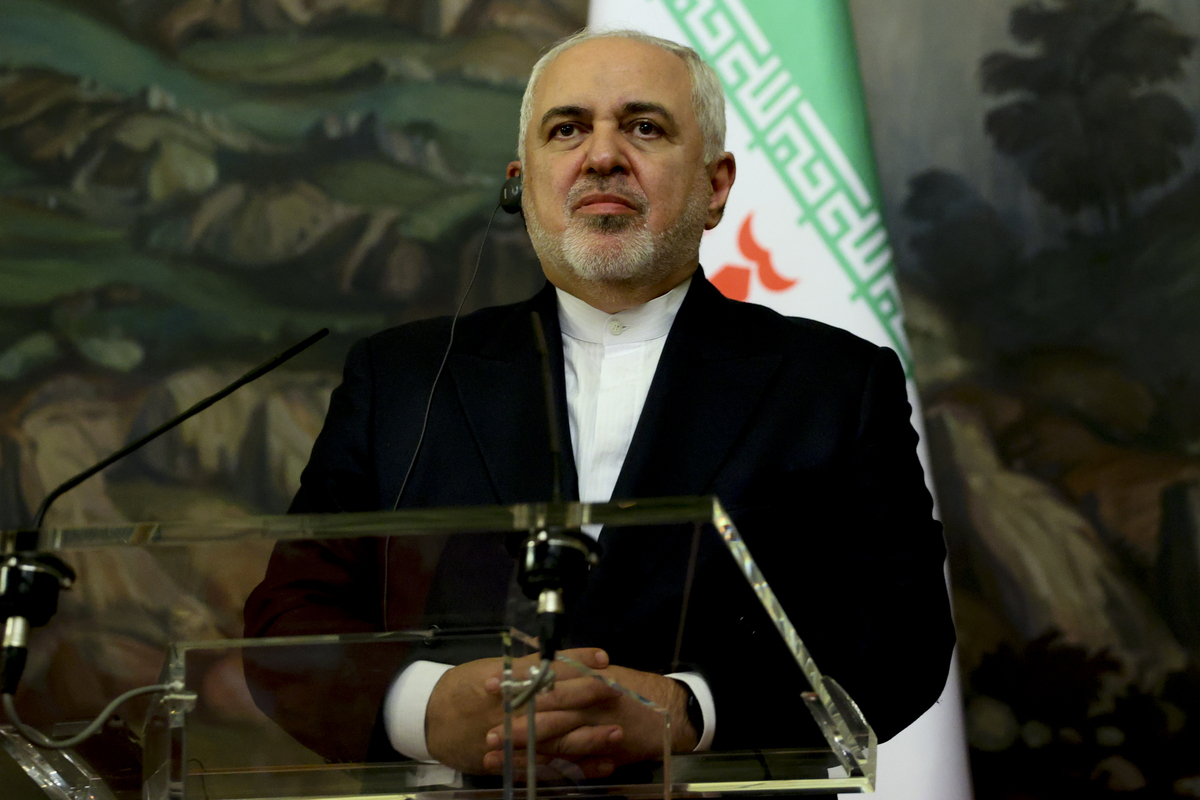The Iranian foreign ministry has expressed its support for a Russian-brokered agreement between Armenia and Azerbaijan to end a 44-day fighting in the Karabakh region of Azerbaijan.
In a statement published on November 10, the ministry underlined “the necessity for respecting the territorial integrity and sovereignty of other countries, a lack of change in internationally recognized official borders, liberation of occupied territories, the return of refugees, respect for minorities’ security and rights”.
Tehran also hopes the agreement, which includes principles mentioned in an initiative put forward by Iran, will lead to lasting peace in the Caucasus region, according to a statement published on the official website of the Iranian foreign ministry.
The ministry underlined its readiness to help realize lasting security and peace in the region and contribute to regional initiatives, saying “the Islamic Republic of Iran also stands ready to help deploy Russian peacekeeping troops along the lines of contact based on clauses 3 and 4 of the ceasefire agreement”.
The peace deal came into effect on November 10 after it was signed by the President of Azerbaijan, President of Russia and Prime Minister of Armenia. Under the new deal, Azerbaijan will keep areas of the Nagorno-Karabakh region and surrounding districts that it has liberated during the war, and Armenia has also agreed to withdraw from other adjacent districts in weeks to come. According to the trilateral statement, Armenia will return to Azerbaijan the occupied Kalbajar district by November 15, the occupied parts of Aghdam district by November 20, and the occupied Lachin district by December 1.
The return of the internally displaced persons and refugees to the Nagorno-Karabakh region and surrounding districts under the supervision of the Office of the United Nations High Commissioner for Refugees is also included in the document.
The agreement also envisages the exchange of war prisoners, with all economic and transport links in the region to be restored. Russia will deploy 1,960 military personnel with small arms, 90 armored personnel carriers, 380 units of automobile and special equipment according to the deal.
Meanwhile, since the beginning of heavy clashes between Armenia and Azerbaijan, several mortar shells have mistakenly hit Iran's northwestern borders. Earlier, several artillery shelling damaged the farmlands of Aqa-Alilou village in Heris County, as well as houses in the city of Khoda-Aferin in Iran’s province of East Azerbaijan. A drone crashed in the farmlands of the border County of Parsabad, in Iran's Ardabil Province.
“In order to establish lasting security and peace in the border areas of Iran, especially in the north of Ardabil province, all military developments in the Karabakh region are monitored 24 hours a day,” Deputy Commander of Iran’s Khatam al-Anbiya Air Defense Headquarter Brigadier General Ghader Rahimzadeh said on November 9.
Iran’s Supreme Leader Ali Khamenei and President Hassan Rouhani reiterated their support for the territorial integrity of Azerbaijan, saying that all Azerbaijani territories under Armenian occupation must be “liberated and returned to Azerbaijan”.
A new round of clashes between the Armenian and Azerbaijani forces broke out on September 27 when Armenia's troops deployed in the occupied Azerbaijani lands began shelling heavily the military positions and civilian settlements of Azerbaijan. The attack prompted immediate counter-attack measures by the Azerbaijani army to push back Armenia's offensive. Prior to the end of the clashes on November 10, the Azerbaijani army liberated about 300 settlements, including the cities of Jabrayil, Fuzuli, Zangilan, Gubadli and Shusha, as well as dozens of villages, settlements and strategic heights in the districts of Fuzuli, Jabrayil, Zangilan, Gubadli, Tartar, Kalbajar, Khojavend, Khojaly, Shusha and Lachin.
Armenia and Azerbaijan have been locked into a decades-old conflict over the Nagorno-Karabakh region, which is an internationally recognized territory of Azerbaijan. Following the Soviet Union’s dissolution in 1991, Armenia launched a military campaign against Azerbaijan that lasted until a ceasefire deal was reached in 1994. Armenia occupied 20 percent of Azerbaijan’s internationally recognized territories including the Nagorno-Karabakh region and seven surrounding districts. Over 30,000 ethnic Azerbaijanis were killed and one million were expelled from those lands in a brutal ethnic cleansing policy conducted by Armenia.
Although the United Nations Security Council adopted four resolutions demanding the immediate withdrawal of the occupying forces from the Azerbaijani lands and the return of internally displaced Azerbaijanis to their ancestral lands, Armenia failed to comply with all four legally binding documents.







 Russian Foreign Minister Sergei Lavrov has reasserted that Moscow has no intentions to stop the fighting in Ukraine, even if peace talks commence.
Russian Foreign Minister Sergei Lavrov has reasserted that Moscow has no intentions to stop the fighting in Ukraine, even if peace talks commence.
 Iran has refuted reports of alleged damage to Shimon Peres Negev Nuclear Research Centre located southeast of Dimona, Israel, during the recent air...
Iran has refuted reports of alleged damage to Shimon Peres Negev Nuclear Research Centre located southeast of Dimona, Israel, during the recent air...
 Iran’s Foreign Minister, Hossein Amir-Abdollahian, has labeled a foiled Israeli drone attack in certain parts of the country as a "failure" for Isr...
Iran’s Foreign Minister, Hossein Amir-Abdollahian, has labeled a foiled Israeli drone attack in certain parts of the country as a "failure" for Isr...



